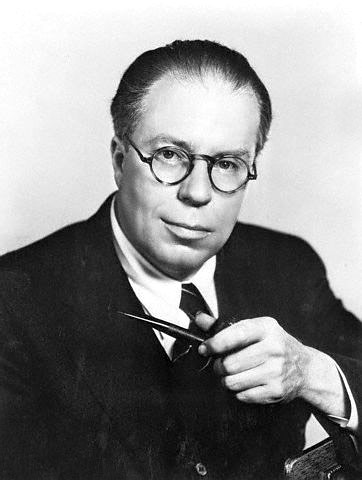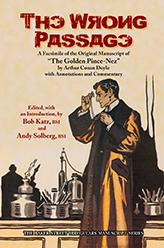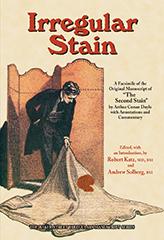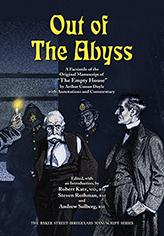

Christopher Morley




Of Morley and Manuscripts: The BSI Trust and the BSI Manuscript Series
Presented by Andy Solberg and Robert Katz
Notes by Carla Coupe
Red Circle members gathered at the Hyatt Regency Bethesda on September 25 for fellowship, food, and to enjoy fascinating presentations by Andy Solberg and Bob Katz on the history of the BSI, the founding of the BSI Trust, and the origins of the BSI manuscript series.
Andy Solberg kicked off this inaugural presentation of the BSI Trust. He is the Chair of the Trust and oversees the BSI Archives, a special collection housed at the Houghton Library at Harvard University.
Solberg began by outlining Christopher Morley’s interest in all things Holmes, beginning with Morley’s introduction to the stories in 1900 and his founding of the first Sherlockian society, The Sign of Four, in 1902. As Morley’s literary prowess and reputation grew, he never lost interest in the Holmes stories, an interest that was shared by many of his friends.
An avid social diner, Morley threw a party on January 6, 1934. Afterwards he wrote in the Saturday Review of Literature about the first toast to The Woman and mentioned, in passing, the founding of the Baker Street Irregulars, which generated a tremendous amount of interest. The first BSI meeting was on June 5, 1934, and the first official dinner was on December 7 of that year.
In 1938, Edgar W. Smith wrote to Morley at the urging of Vincent Starrett, and Smith ended up arranging the 1940 dinner. The BSI met yearly thereafter. During the 1942 dinner, the BSI archive was first mentioned.
In 2003, the BSI recognized that an archive needed to be established, and the Houghton Library at Harvard expressed an interest in housing the materials—thus the BSI Trust was born. The Trust (www.bsitrust.org) has an oral history project, and is in the process of digitizing all the materials and making them available to the public.
Bob Katz has co-edited three volumes of the BSI manuscript series along with Andy Solberg. These volumes contain facsimiles of Doyle’s handwritten manuscripts along with scholarly articles and period illustrations.
The first manuscript Katz and Solberg focused on was "The Golden Pince-Nez" with the book entitled The Wrong Passage. Katz describes Doyle’s manuscript as beautifully handwritten, with very few corrections. He reminded us that, with Doyle, “every word matters.”
Christopher Morley and his brothers attended Haverford College (as did Katz, “much later”). The college library owns the manuscript of "The Second Stain," and Katz wanted to use that for the next volume, The Irregular Stain. "The Second Stain" is the only story for which the galley proofs exist, and so we are able to compare the differences between the manuscript, the galleys, and the final published version. This volume also contains a privately-owned Sidney Paget illustration that’s been re-scanned and shows a great deal more detail than the originally published version.
Out of the Abyss, featuring the manuscript of "The Empty House," is their most recent volume. Conan Doyle wrote this story in children’s exercise books, and among the few corrections, our second-most-favorite villain's name was changed from Aloysius Moran to Sebastian Moran!
Katz reminded us that as you study the manuscript, you can truly appreciate Doyle’s economy of writing. He compressed an immense amount of information into a relatively short space.
For example, in "The Empty House," Holmes tells of his travels during the Great Hiatus, including the fact that he “paid a short but interesting visit to the Khalifa at Khartoum.” After Gordon’s defeat and death at Khartoum by al-Mahdi, the British government decided to mount a revenge expedition, which took place in 1898 and resulted in the Battle of Omdurman. From this simple phrase, we know that Holmes was able to enter Khartoum, so he must have been able to speak Arabic or another language of the area, that he was a master of disguise, and that he passed on information to Mycroft that led to the successful culmination of British might in the area.
As Katz says, no matter which version you read—manuscript, galley, or published—read every word, for each word contains a wealth of meaning!